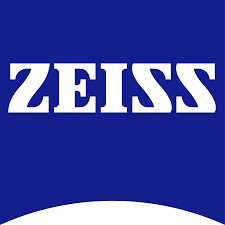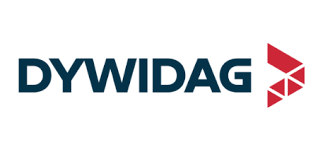Microsurgical Instruments
Published Date: March 16, 2024 | Report Code: microsurgical-instruments
Microsurgical Instruments Market Size, Share, Industry Trends and Forecast to 2033
This report provides a comprehensive analysis of the Microsurgical Instruments market, covering market size, trends, regional performance, and future forecasts for 2023 to 2033. It offers insights into various segments, including products and technologies shaping the industry.
| Metric | Value |
|---|---|
| Study Period | 2023 - 2033 |
| 2023 Market Size | $6.80 Billion |
| CAGR (2023-2033) | 6.8% |
| 2033 Market Size | $13.36 Billion |
| Top Companies | Medtronic , Johnson & Johnson, Stryker Corporation, B. Braun Melsungen AG, Karl Storz SE & Co. KG |
| Last Modified Date | 02 June 2025 |
Microsurgical Instruments (2023 - 2033)
Microsurgical Instruments Market Overview
Customize Microsurgical Instruments market research report
- ✔ Get in-depth analysis of Microsurgical Instruments market size, growth, and forecasts.
- ✔ Understand Microsurgical Instruments's regional dynamics and industry-specific trends.
- ✔ Identify potential applications, end-user demand, and growth segments in Microsurgical Instruments
What is the Market Size & CAGR of Microsurgical Instruments market in 2023?
Microsurgical Instruments Industry Analysis
Microsurgical Instruments Market Segmentation and Scope
Tell us your focus area and get a customized research report.
Microsurgical Instruments Market Analysis Report by Region
Europe Microsurgical Instruments:
The European market for Microsurgical Instruments stood at $1.72 billion in 2023, projected to expand to $3.38 billion by 2033. The growth can be attributed to stringent regulations ensuring enhanced surgical outcomes and a growing demand for minimally invasive procedures.Asia Pacific Microsurgical Instruments:
In the Asia Pacific, the market was valued at $1.40 billion in 2023, projected to reach $2.76 billion by 2033, reflecting a steady growth trajectory driven by increasing healthcare expenditure and rising patient populations opting for advanced surgical solutions.North America Microsurgical Instruments:
North America held a significant market value of $2.47 billion in 2023, with projections indicating $4.86 billion by 2033. The region leads in technological advancements and high healthcare spending, making it a key player in the microsurgical instruments market.South America Microsurgical Instruments:
The South American Microsurgical Instruments market was valued at $0.53 billion in 2023 and is expected to grow to $1.04 billion by 2033, fueled by expanding healthcare access and advancements in medical technologies.Middle East & Africa Microsurgical Instruments:
In the Middle East and Africa, the market is forecasted to grow from $0.67 billion in 2023 to $1.33 billion by 2033. The growth factors include improving healthcare facilities and increasing investments in surgical technologies.Tell us your focus area and get a customized research report.
Microsurgical Instruments Market Analysis By Product
Global Microsurgical Instruments Market, By Product Market Analysis (2024 - 2033)
The product segment of the Microsurgical Instruments market consists of scissors, forceps, clamps, sutures, and other instruments. Scissors dominate the market with a size of $2.83 billion in 2023, projected to $5.55 billion by 2033, accounting for 41.55% market share. Forceps follow closely at $1.62 billion, growing to $3.19 billion with a share of 23.86%.
Microsurgical Instruments Market Analysis By Application
Global Microsurgical Instruments Market, By Application Market Analysis (2024 - 2033)
Applications of Microsurgical Instruments encompass neurology, ophthalmology, orthopedics, and dentistry. The neurology segment comprises the largest share for the market, projected to grow from $2.83 billion in 2023 to $5.55 billion by 2033. Each application contributes significantly to the overall growth due to the demand for specialized surgical techniques.
Microsurgical Instruments Market Analysis By End User
Global Microsurgical Instruments Market, By End-User Market Analysis (2024 - 2033)
Key end-users include hospitals, ambulatory surgical centers, academic and research institutes, and clinics. Hospitals represent the largest share, with a market size of $2.83 billion in 2023, growing to $5.55 billion by 2033. These institutions are increasingly adopting innovative surgical instruments to enhance patient outcomes.
Microsurgical Instruments Market Analysis By Technology
Global Microsurgical Instruments Market, By Technology Market Analysis (2024 - 2033)
Technological advancements are a crucial aspect of the Microsurgical Instruments market. The segment includes manual instruments, robotic-assisted instruments, and minimally invasive instruments. Manual instruments dominate with a size of $4.10 billion in 2023, predicted to reach $8.06 billion by 2033, highlighting their continued relevance in surgical procedures.
Microsurgical Instruments Market Analysis By Distribution Channel
Global Microsurgical Instruments Market, By Distribution Channel Market Analysis (2024 - 2033)
Distribution channels for Microsurgical Instruments include direct sales, online sales, and retail sales. Direct sales remain the dominant channel at $4.10 billion in 2023, expected to expand to $8.06 billion by 2033, leveraging close relationships between manufacturers and healthcare providers.
Microsurgical Instruments Market Trends and Future Forecast
Tell us your focus area and get a customized research report.
Global Market Leaders and Top Companies in Microsurgical Instruments Industry
Medtronic :
Medtronic is a leading global medical technology company that specializes in the development of innovative surgical instruments and technologies aimed at improving patient outcomes.Johnson & Johnson:
Johnson & Johnson is recognized for its advanced surgical technology and instruments, providing comprehensive solutions for various surgical procedures.Stryker Corporation:
Stryker Corporation leads in products for healthcare including instruments and devices used in surgeries, driving innovation through advanced engineering.B. Braun Melsungen AG:
B. Braun is known for its development of high-quality surgical instruments and has a significant market presence in microsurgery segment.Karl Storz SE & Co. KG:
Karl Storz focuses on minimally invasive surgery with advanced instrumentation and technologies tailored to enhance surgical efficiency.We're grateful to work with incredible clients.









Related Industries
FAQs
What is the market size of microsurgical instruments?
The global microsurgical instruments market is valued at approximately $6.8 billion in 2023, with a projected CAGR of 6.8% leading to substantial growth by 2033.
What are the key segments of microsurgical instruments?
The microsurgical instruments market can be segmented into types such as scissors, forceps, clamps, sutures, and others, with scissors dominating the market, expected to grow from $2.83 billion in 2023 to $5.55 billion by 2033.
What are the key trends in microsurgical instruments?
Key trends include the rise of robotic-assisted instruments and minimally invasive procedures, reflecting advancements in surgical technology aimed at improving precision and patient outcomes.
What is the regional market data for microsurgical instruments?
In 2023, North America leads with $2.47 billion, followed by Europe at $1.72 billion and Asia Pacific at $1.40 billion. By 2033, North America is expected to grow to $4.86 billion, while Europe reaches $3.38 billion.
What is the market share of different types of microsurgical instruments?
In 2023, scissors hold 41.55% market share, followed by forceps at 23.86% and clamps at 12.89%. By 2033, their market shares remain consistent, reflecting their essential roles in surgeries.
What are the applications of microsurgical instruments?
Microsurgical instruments are widely used in neurology, ophthalmology, orthopedics, and dentistry, with neurology expected to hold a 41.55% share in 2023, growing steadily by 2033.
How are microsurgical instruments sold in the market?
Sales are primarily through direct sales (60.33% share in 2023) and online sales (26.21% share). This indicates a shift towards digital platforms for surgical instrument procurement.
What factors are driving the growth of the microsurgical instruments market?
The market growth is driven by technological advancements, increasing prevalence of chronic diseases requiring surgical interventions, and rising demand for minimally invasive procedures.
What challenges does the microsurgical instruments market face?
Challenges include high costs of advanced surgical instruments, stringent regulatory approvals, and the need for skilled professionals to operate complex devices.
What innovations are expected in microsurgical instruments?
Future innovations are anticipated in robotic-assisted instruments and smart devices that enhance precision and efficiency in surgeries, potentially transforming surgical practices.
